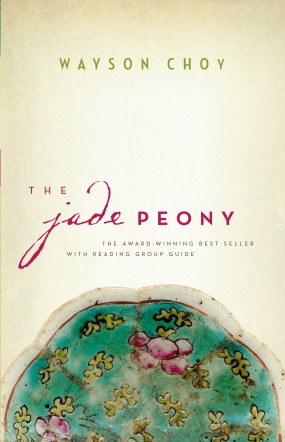The following questions will help you focus on important aspects of the story. Consider reading through them before you read the novel, as you may want to track some of the ideas they suggest. Of course, return to them once you’re done and consider these aspects of the book. Also, consider reading through Glenn Deer’s interview with Choy for some helpful personal reflections on the novel and its grounding in his childhood.
When you come across a quotation that you think is important for future reference, mark it with a sticky note, type it into a file, or, if you own the book, mark it in any way you like! Then you can easily find these quotations when you need to back up your ideas in class discussion or writing projects. Keep an eye out as well for symbols, ideas, or issues that are not covered below.
Spaces
- How do the home, street, neighbourhood, and surrounding areas suggest different cultural and social values and meanings? How does this spatial configuration differ between characters? Consider how uses of space foreground hybridity and interculturalism or marginalization, separation, and distinctions.
- How do various spaces act as microcosms for aspects of the discussion of nationalism? For instance, how do individuals and groups interact differently depending on where they are or who has power over what happens where?
Historical Events and the Nation

Japanese Canadians being relocated to internment camps in interior BC. The Jade Peony explores the impact of the internment on the Chinatown community. “Relocation of Japanese-Canadians to internment camps in the interior of British Columbia,” 1942. Library and Archives Canada, accession number 1972-051 NPC, C-047397
- How does the novel represent historical events and policies such as key moments in World War II, especially the attack on Pearl Harbor, the invasion of China, and the Chinese Exclusion Act of 1923? How do these historical events impact the lives of the characters?
- The internment of Japanese Canadians during World War II had a major impact on present and future generations; how is this troubling historical action represented in Choy’s story? What does this reveal about the racial, cultural, and social complexities of this time, and how do the narrative perspectives limit, or contribute to our understandings of these aspects of the stories?
Othered Citizens
- How are Japanese Canadians represented from different perspectives? How does this exclude them from, or include them in other Canadian groups?
- How do the characters respond to national requirements, demonstrated by filling out forms, doing military service, and so forth? What do these responses, and the reactions of others to them, reveal about the characters?
- What does the story tell us about the experience of Chinese labourers, their treatment by the authorities, and the impact of governmental changes to immigration law on their sense of community? How do official documents (birth certificates and other legal documents) impact the experience of Wong Suk? How does his story reflect power differentials?
- How is the process of Japanese Canadian internment represented? How does the perspective of the children undercut the anxieties and anger of the adults? Why are these different perspectives important? What do they emphasize or alter about this dark part of Canadian history?
Chineseness
- Discuss how, especially for Jook-Liang, the Chinese legends as well as the Tarzan story inform her perceptions of Wong Suk. What does this suggest about her cultural identity formation and how she sees him? How does it illustrate Jook-Liang’s transcultural understandings of Wong Suk?
- Discuss how the children are caught between the values of home and school. How do the parents and children navigate these tensions? Why is Chinese language schooling so important to the older generation? How is this perceived and valued by the children?
Gender and Sexuality
- How does Choy represent differences between traditional Chinese approaches to gender and how the young children experience and express it? For instance, examine the tension between the Grandmother’s designation of Jook-Liang as
mo yung—useless
(28, and throughout Chapter 2), and Jook-Liang’s experience of the movies and dancing. How does this influence her self-image, and suggest a changing perspective on her cultural heritage? Is this transformation represented in a positive, or negative light? Similarly, how is Jung-Sum’s homosexuality represented? How does his emerging sexual identity affect both his and other characters’s stories? - Examine the different roles ascribed to the main figures in the novel. What sorts of expectations are based on assumed differences between the sexes, and how does this become troubled through various interactions?
Works Cited
- Choy, Wayson. The Jade Peony. Vancouver: Douglas & McIntyre, 1995. Print.
- Deer, Glenn.
An Interview with Wayson Choy.
Canadian Literature 163 (1999): 34–44. Print. (PDF)









 ©
©